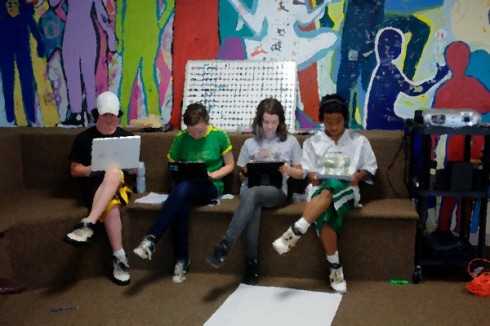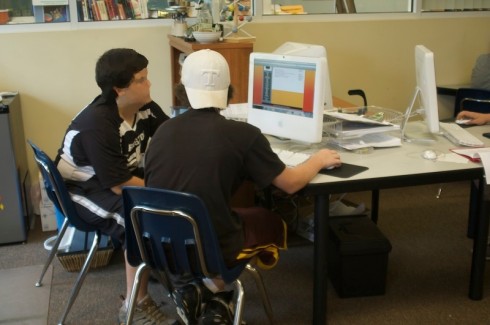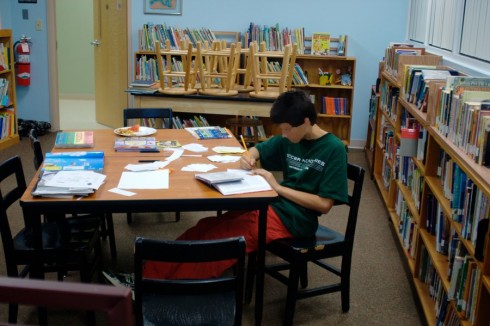Jenny Anderson has an interesting article on a New York school that changed from the typical 45 minute class periods to longer 130 minute “blocks” (thanks to Kara D. for pointing this one out). The whole idea of set class periods is one I’m having to get used to again as I move out of my one-teacher, one-classroom middle school at Lamplighter where time management is a lot more fluid.
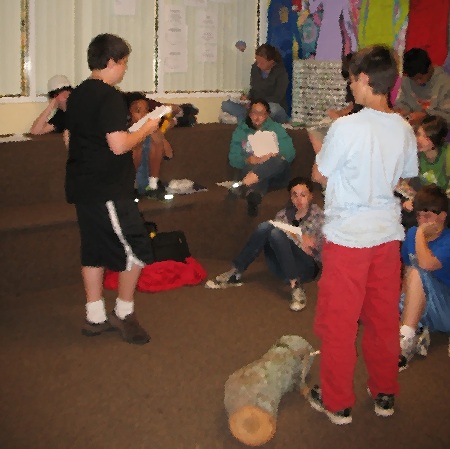
Apart from Spanish class (30 minute class period), everything was pretty flexible at Lamplighter. In theory, I would have a short, spark-the-imagination type lesson at the beginning of each week for math, language, and social/physical science. Then, for the rest of the week, students would use the two hour morning and afternoon blocks to do whatever individual or group work they needed to get done.
In theory at least.
In practice, my lessons would tend to last a lot longer; I like to promote discussion, and once you get them going, adolescents often find it difficult to stop talking. So, almost inevitably, a quick review of the novel chapter they read last night would devolve into a discussion of something like Mutually Assured Destruction and continue onto the potential for accelerated evolution due to nuclear fallout, and then to the parts of atoms and why some elements are radioactive and some are not.
I also found that I would have to assign specific blocks that prioritized group work. It’s hard, apparently, to arrange everyone’s schedules to do group work, even when you’re with the same group of people, in the same classroom, all day at school. Part of this though is that, in giving students so much control of their time, students find their own rhythms to the days, with, say, math in the mornings and language after noon, that may not match up well with each other. So I’d find myself saying, when we restarted after lunch, “Remember your group projects are due tomorrow, so you might want to get on that.” And, typically, they did, getting the group work done before going back to their individual work.
The key difference with a set time period for each class, is the tendency for the teacher to feel that they have to stay on subject for the entire period. There are, of course, different topics and subjects that need the full period or block, and I certainly favor having a longer time period to work with, but there are times when you might feel the urge to artificially stretch the work just to fill in the time. This problem was mentioned in the article:
Another complaint: boring 45-minute classes became boring two-hour classes. Robert Ronan, a senior, said, “There are some classes that lend themselves more easily to 2-hour-and-15-minute classes and teachers that can do that, but I sort of feel like a lot of the classes are the same, just stretched.”
–Anderson, 2011: At Elite School, Longer Classes to Go Deeper
It seems to me, that if you don’t want to lecture or have a discussion for entire two hours, which could get boring if not done really well, and you want individual or group work, which some students will complete faster than others, you are going to be faced with students who have time on their hands. You’d prefer that they spent that time productively, and definitely don’t want them distracting other students, so there need to be clear expectations about what they should be doing in these interstitial moments.
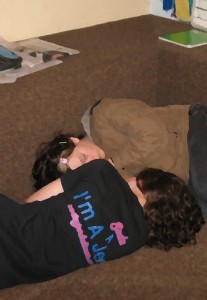
I’d lean toward making sure they know how much time they have before you need their attention again (or they have to leave) and then giving them the choice of what to do: they could start on homework for this or even another class; they could take a quiet break to relax and recuperate (journaling might be a good idea); or they could do what you’re probably doing, and go around helping their peers with the work at hand.
Within the same block of time:

